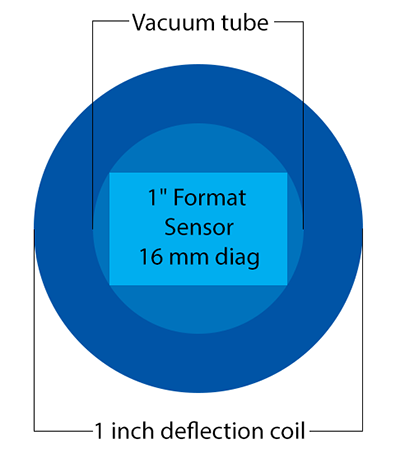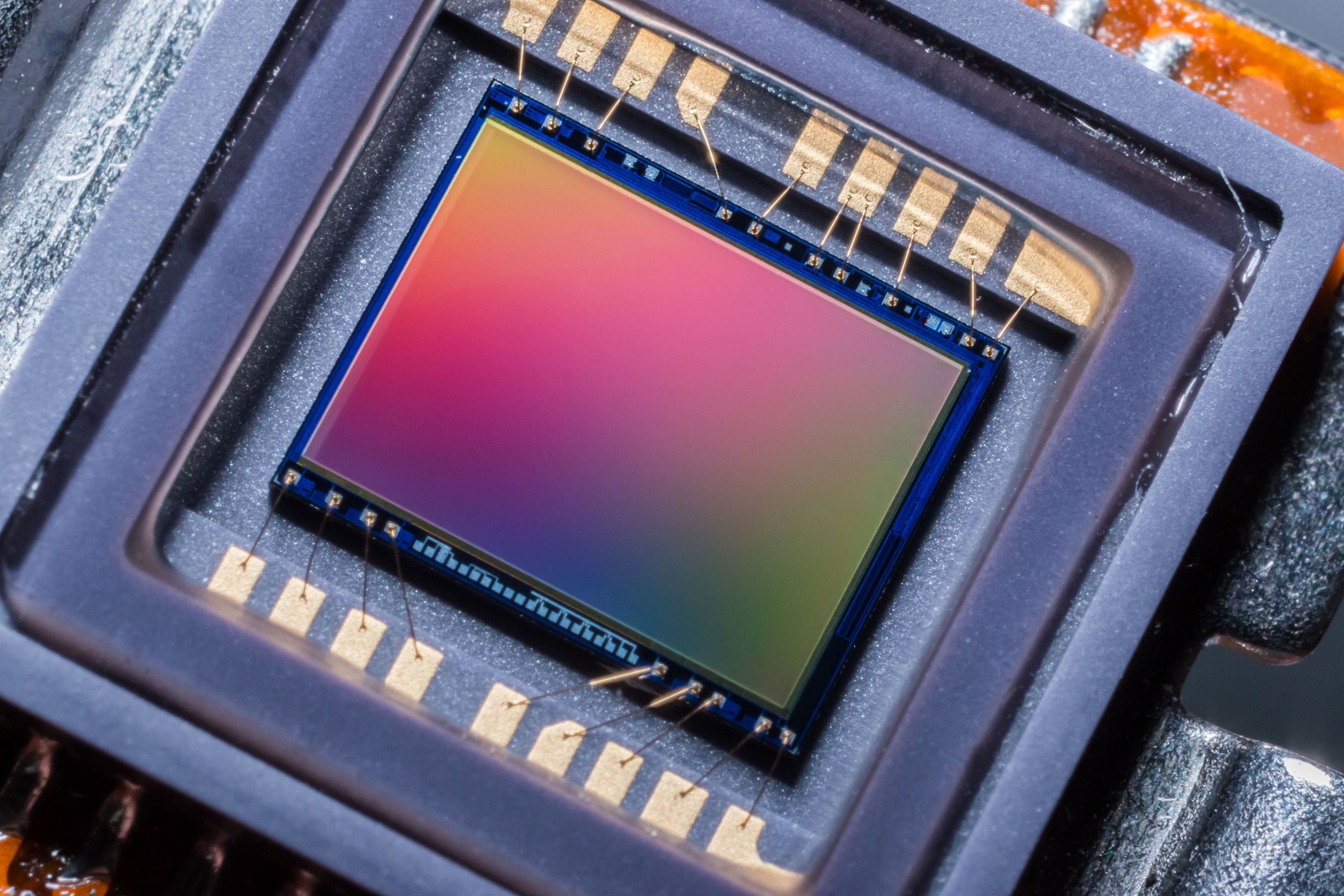When selecting a camera for an imaging application, the size of the camera’s sensor is an important consideration as sensor pixel size is directly related to its sensitivity. Sensor sizes, however, are not exactly as they may seem. A 1” sensor is indeed larger than 1/2” sensor but it does not measure exactly 1 inch in any of its dimensions including diagonally.
Sensor size naming conventions stem from the days when vacuum tubes were used in cameras. For a 1” inch sensor, the tube would be placed in a 1” deflection coil therefore the 1” inch sensor would actually be smaller than an inch. The ratio between the diameter of the coil and the image format of the tube was roughly 63%.

Below is a chart outlining common sensor sizes and their equivalent sizes in millimetres. These sizes can vary from sensor to sensor but typically have these general dimensions.

Not shown above is the 35mm sensor where the format name better reflects the size of the sensor. This sensor dimension is based off of 35mm film and has a width of approximately 35mm and a diagonal measurement approximately 43mm, depending on the manufacturer. With an active area of over 7 times that of their 1" cousins, pixel density of 35mm sensors can achieve impressive quantities while maintaining large pixel sizes resulting in high sensitivity.
Lumenera has a wide range of sensor formats to best suit your application, including four cameras with 35mm format sensors. Learn more about our large format sensors in our solution sheet on selecting the right camera for intelligent traffic systems where we compare two of our newest large format cameras based on resolution and sensitivity.
If you are interested in learning how Lumenera can find a solution for your unique imaging application, visit our website or contact us to talk to a sales representative or technical engineer.


